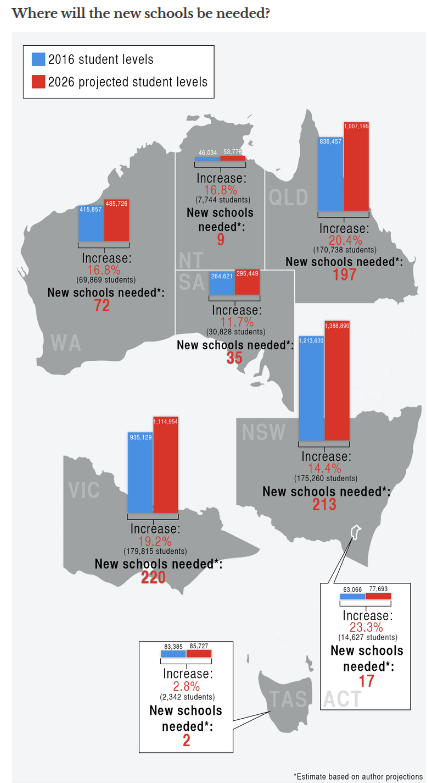In 2016, the former Turnbull Government introduced a new visa class that enabled international students and their guardians access to Australian schools, along with the ability to buy property ahead of applying for permanent residency (see here, here and here).
At the time of introduction, I labelled this visa “one of the worst policies that I have ever seen”, because it would worsen already severe over-crowding across schools, make housing less affordable, and would add additional strains to economic and social infrastructure across Australia’s major cities.
Now, with excessive international student numbers having already destroyed university entry, English-language and teaching standards, turned universities into worthless ‘degree factories’, and paralysed debates around democratic freedoms, the head of the International Education Association of Australia (IEAA) lobby group, Phil Honeywood, has called for Australia’s high schools to lift international student enrolments:
Australia should be recruiting more international students to attend its high schools and marketing its school curriculum to overseas international schools more aggressively, according to the International Education Association of Australia.
The organisation’s chief executive Phil Honeywood said studying here in high school would help international students form bonds with local students and reduce the risk of them becoming socially isolated at university.
“If we are genuine about better integrating international students with Australian domestic students, then a lot more needs to be done with high school enrolments from overseas”…
“By having even a small number of international students, not only does it provide individual government schools with additional revenue but it also encourages inter-cultural understanding of Australian kids with students from other cultures”…
Only about 3 per cent of full-fee paying international students in Australia are studying at a secondary level…
Three years ago, the Grattan Institute estimated that the number of school students across Australia would balloon by 650,000 (17%) by 2026, requiring the construction of an additional 400 to 750 new schools (up from 9,400). NSW (mostly Sydney) was projected to require a further 213 schools to be built to cope with 14% growth in student enrolments over the decade, whereas Victoria (mostly Melbourne) was projected to need an additional 220 schools to cope with 19% growth in students over the same period (see below graphic).

Adding more international students into the mix will obviously make the overcrowding situation much worse and require even more schools to be built – clearly an impossible task. No additional funding has been earmarked to cope with the international student school enrolments.
Moreover, just like we have witnessed with universities, school standards would very likely be eroded by having international students from non-English speaking (NES) nations spread across Australia’s classrooms.
Think about it logistically. How often would teachers have to pause to explain concepts to NES students during class? And, in the case of Chinese international students, would teachers be prohibited from teaching western values blacklisted in Document No. 9 and be forced to tip-toe around matters relating to Tibet, Hong Kong, Taiwan, or other areas sensitive to the Communist Party of China?
More broadly, is this what Australia’s economy has been reduced to: flogging-off houses and residency to wealthy foreigners while dumbing down the education of our own children? Do we really want foreign political conflicts paralysing debate in our high schools as well?
Many public schools are already over enrolled and the possibility of displacing local students with international students should be outright rejected by policy makers.

